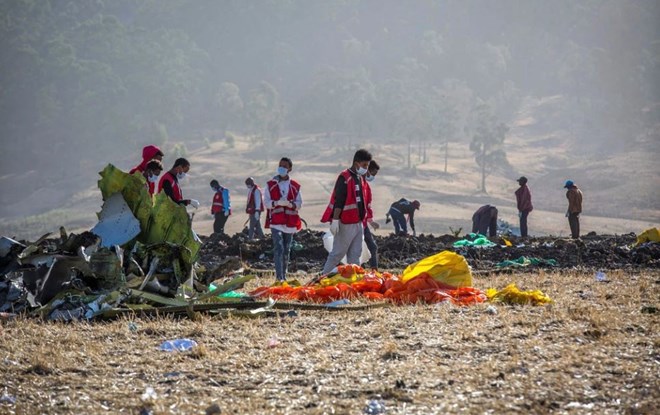
Tuesday March 12, 2019

Any airline disaster demands explanation, but the Ethiopian Airlines crash on Sunday — the second in less than five months by the same new model of plane — raises more than the usual questions and fears.
Shortly after the Boeing 737 Max 8 took off from Addis Ababa, the capital of Ethiopia, bound for Nairobi, Kenya, the pilot sent a distress call and received permission to return to the airport. Six minutes after takeoff, the jet plunged to earth, killing all 157 people aboard.
Here is a look at what we know about the disaster — and what we still don’t.
What caused the crash?
It is much too soon to say why the plane went down, or to rule out possibilities like pilot error, mechanical breakdown, maintenance problems or terrorism.
The “black box” flight data and voice recorders were recovered, the airline said on Monday, but the information in them can take weeks or months to analyze. Investigators still have not said what was learned from the recorders recovered after a previous 737 Max 8 crash, in Indonesia in October.
In aviation disasters, early speculation often turns out to be misguided. The causes may end up being problems that were unexpected, perhaps because they had rarely been encountered.
Investigations sometimes take years.
The investigation into the Lion Air crash has focused on the possibility that aircraft software put the plane into a dive, overriding the flight crew’s manual controls, based on incorrect data about the jet’s speed.
That has raised questions about whether the computer system — which differs from earlier models of 737 — was flawed, or whether pilots have been adequately told about changes to it and trained. There are also questions about whether the plane’s instruments were properly maintained.
But as yet, there is no evidence that the same issues recurred in the Ethiopian flight.
How is this like the Lion Air crash? How does it differ?
There are some obvious similarities between the disasters in Ethiopia and Indonesia, but significant differences, as well.
The crews on both flights issued distress calls minutes after take off, before their aircraft plunged to the ground.
But the civil war next door to Ethiopia, in Somalia, raises the possibility that terrorism, not mechanical failure, was to blame. The Shabab, the militant Islamist group affiliated with Al Qaeda, has mounted attacks on both Ethiopia and Kenya, and the United States has stepped up its airstrikes on the group.
A witness has said that smoke was streaming from the jet while it was still aloft, though that could indicate any number of things.
There are also big differences between the airlines involved in the two crashes. Ethiopian Airlines has a generally good safety record, while Lion Air’s is poor.
The Lion Air flight had an experienced pilot and co-pilot, each with more than 5,000 hours of flying time. The pilot of the Ethiopian flight was highly experienced, too — but the co-pilot was remarkably inexperienced, with just 200 hours.
It is not clear who was at the controls when the jet went down.
Which airlines fly this plane? Which have grounded it?
On Monday, China and Indonesia ordered their airlines to ground their 737 Max 8’s, at least temporarily. A handful of other airlines, including Ethiopian, have also suspended its use.
But as of Monday, of the four dozen carriers that have the model in their fleets, about half continued to fly it. Those include the three largest users — Southwest Airlines, Air Canada and American Airlines — and other Western companies like WestJet, a Canadian carrier; TUI Group, a European line; and Norwegian Air.
Two of the largest carriers based in the United States, Delta Air Lines and United Airlines, do not have the Boeing model.
More than 350 Max 8’s have been delivered around the world.
Boeing introduced the 737 more than 50 years ago, and more than 10,000 have been built, making it the most widely used airliner in the world. But it has undergone so many changes over the years that earlier models have little in common with newer ones.
The Max 8 entered commercial service in 2017, the first model of a fourth generation of the 737 that is more technologically advanced and fuel-efficient than predecessors. The model’s newness makes it difficult to make meaningful comparisons with more established planes that have flown millions of times.
Models from the 737’s second generation, introduced in the 1980s, and the third generation, first produced in the 1990s, are among the world’s most popular and safest airliners.
Who are the victims?
The people killed in the Ethiopia crash came from more than 30 countries. They included at least 22 United Nations employees, some of them headed to a U.N. Environment Assembly meeting in Nairobi.
Other victims included aid workers, professors, diplomats, entrepreneurs and consultants.
As of Monday, 32 were identified as Kenyan and 18 as Canadian. Ethiopia and France each lost nine citizens; the United States, China and Italy each lost eight, and Britain lost seven.